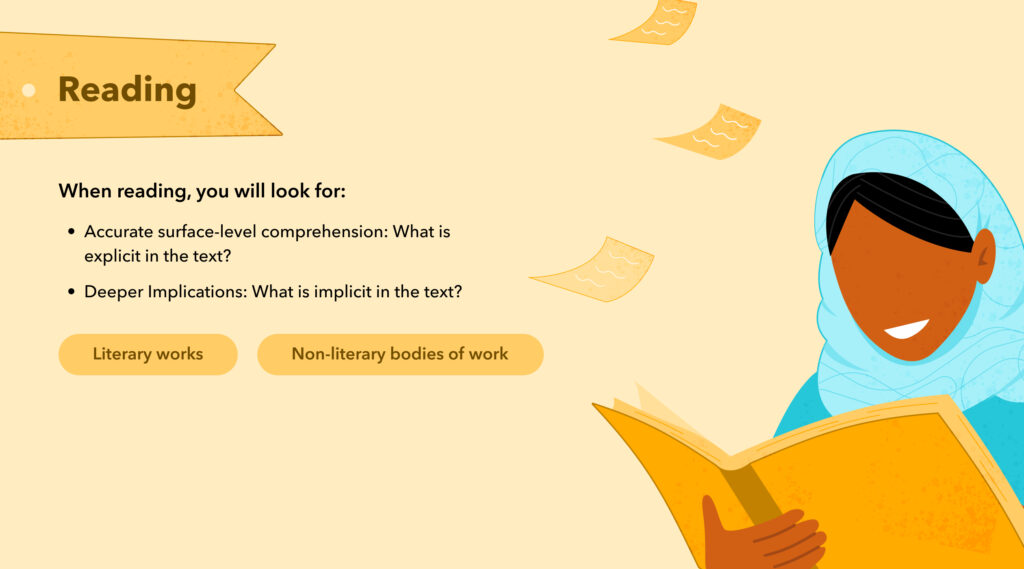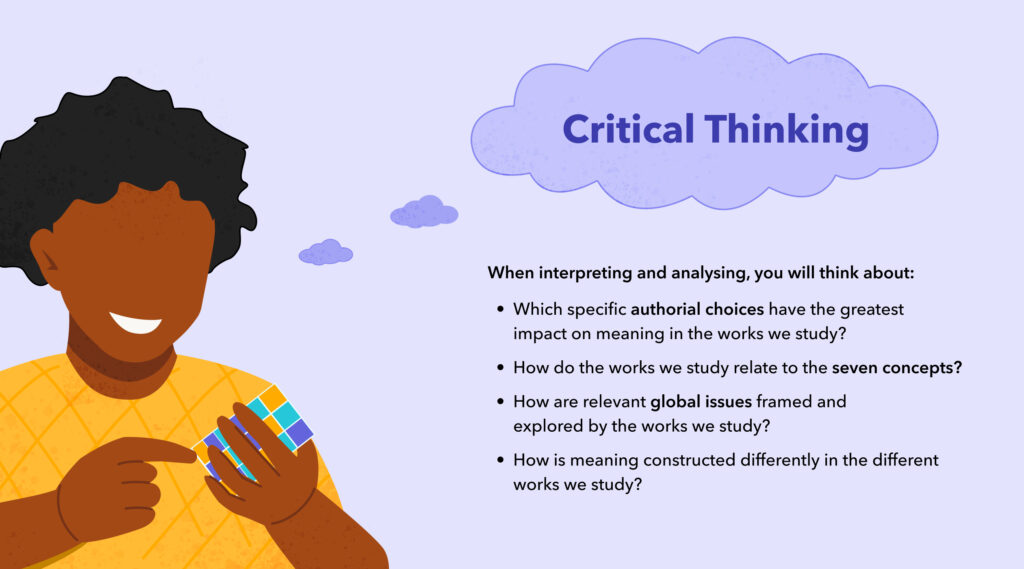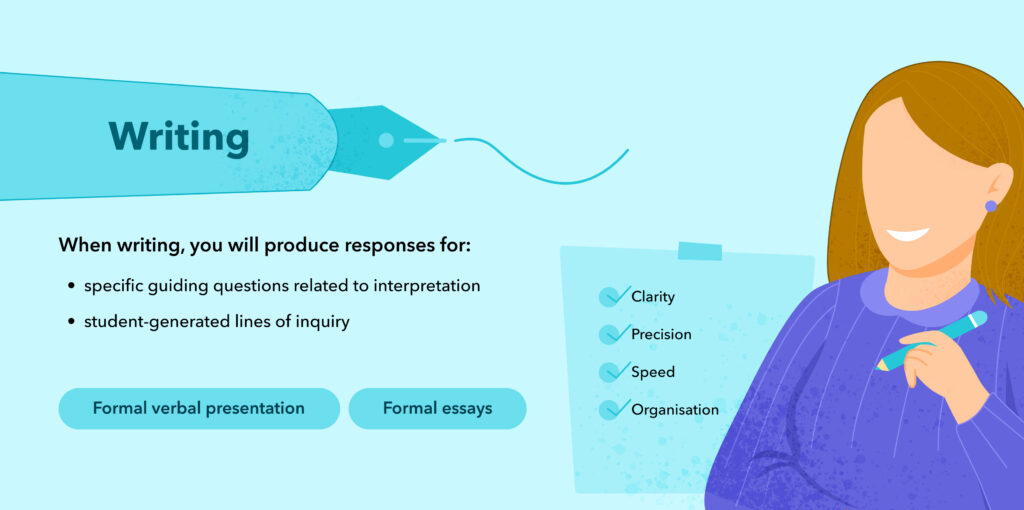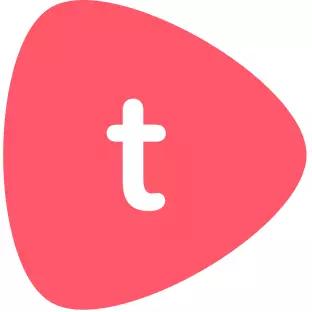As a language and literature educator, you will support student learning in three critical domains:

In this course, your students will grow as readers of literary and non-literary texts and critical thinkers, capable of analyzing these texts in meaningful ways to explore meaning, relevance, and value. They become writers and speakers who can formally communicate complex ideas with a high level of clarity, nuance, and sophistication.
What will you teach them?

You will teach your students to read a variety of different non-literary text types and literary forms and genres. You’ll teach them how to find depth and nuance in the works that you select for study. Whether they’re reading Mary Shelly’s Frankenstein or a recent ad campaign for Nike, you’ll help them understand that rich implications can be found beneath surface-level meaning.

Next, you will teach your students to think critically about how meaning is constructed and how it is constructed differently in different texts. Students will learn how textual representations of important global issues can act to reinforce, reframe, and critique cultural expectations and values. By the end of the course, students should be able to recognize and evaluate how specific authorial choices and stylistic techniques shape meaning in a broad range of print-based, image-based, and multimodal text types.

Ultimately, your students’ performance will be evaluated based on their ability to write. 60% of the course grades at HL and 70% at SL are determined by your student’s ability to draft a formal academic essay (relevant interpretive thesis, persuasive supporting evidence) under strict exam conditions. With this in mind, it’s imperative that we teach our students to write well, and fast! This goes for reading and critical thinking too.
Click here to download and print our skills in focus poster. Put it up in your language and literature classrooms to make them more vibrant and engaging. the poster!
Big Picture: Designing a course that supports student growth
Ultimately, course design is all about selecting texts, designing classroom activities, and assessments. Before you move to the next section that focuses on course concepts and principles, take a look at the image below to consider the specific ways in which you want your students to grow.





